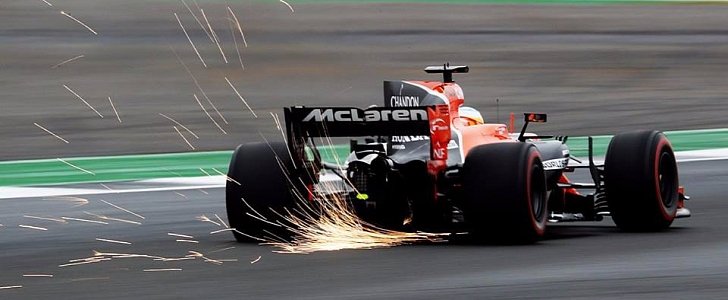The latest era of Formula 1 started in 2014, when the Fédération Internationale de l'Automobile decided to replace the naturally aspirated 2.4-liter V8 with the turbocharged 1.6-liter V6 hybrid power unit. Then 2017 came along, bringing forth wider cars, fatter tires, and improved aerodynamics. But what’s next?
Enter the 2021 Formula 1 power unit regulations, which have been laid out by the FIA and manufacturer representatives today in Paris. More of a roadmap that outlines the key features of the next-generation powertrain, these regs have been plotted with two things in mind. On the one hand, constructors have been pushing for cost reduction. And on the other hand, Formula 1 fans want more exciting racing. Without further ado, here’s what the (near) future holds.
Engine displacement will remain capped at 1.6 liters from 2021 onward, and the hybrid technology will soldier on with minor modifications. One of those changes comes in the form of the lack of MGU-H, the system that captures excess heat energy from the exhaust. The MGU-K, meanwhile, remains. In comparison to the current kinetic energy recovery system, the 2021 MGU-K will be a lil’ bit more powerful and “will focus on manual driver deployment.”
As it’s the case today, the V6 engine will rely on a single turbocharger with dimensional constraints and weight limits. Energy store and control electronics will become standardized, though the FIA didn’t nominate the company that will manufacture these pieces of technology. Another key feature focused on cost-cutting and leveling the field is the “high level of external prescriptive design to give ‘Plug-And-Play’ engine/chassis/transmission swap capability.”
And finally, the FIA took upon itself to impose tighter fuel regulations and limits on the number of fuels used. By that, the Federation tries to address the ongoing concern for burning oil. This practice isn’t only controversial, but offers clear advantages to the F1 teams that use it for additional performance.
Oh, and there’s the matter of sound. To improve the aural qualities of the 1.6-liter engines, the FIA agreed to lift the redline by 3,000 rpm (from 15,000 to 18,000 rpm). The biggest advantage of these regulations, however, is that they create conditions that facilitate new manufacturers to enter Formula 1 as powertrain suppliers.
Engine displacement will remain capped at 1.6 liters from 2021 onward, and the hybrid technology will soldier on with minor modifications. One of those changes comes in the form of the lack of MGU-H, the system that captures excess heat energy from the exhaust. The MGU-K, meanwhile, remains. In comparison to the current kinetic energy recovery system, the 2021 MGU-K will be a lil’ bit more powerful and “will focus on manual driver deployment.”
As it’s the case today, the V6 engine will rely on a single turbocharger with dimensional constraints and weight limits. Energy store and control electronics will become standardized, though the FIA didn’t nominate the company that will manufacture these pieces of technology. Another key feature focused on cost-cutting and leveling the field is the “high level of external prescriptive design to give ‘Plug-And-Play’ engine/chassis/transmission swap capability.”
And finally, the FIA took upon itself to impose tighter fuel regulations and limits on the number of fuels used. By that, the Federation tries to address the ongoing concern for burning oil. This practice isn’t only controversial, but offers clear advantages to the F1 teams that use it for additional performance.
Oh, and there’s the matter of sound. To improve the aural qualities of the 1.6-liter engines, the FIA agreed to lift the redline by 3,000 rpm (from 15,000 to 18,000 rpm). The biggest advantage of these regulations, however, is that they create conditions that facilitate new manufacturers to enter Formula 1 as powertrain suppliers.











